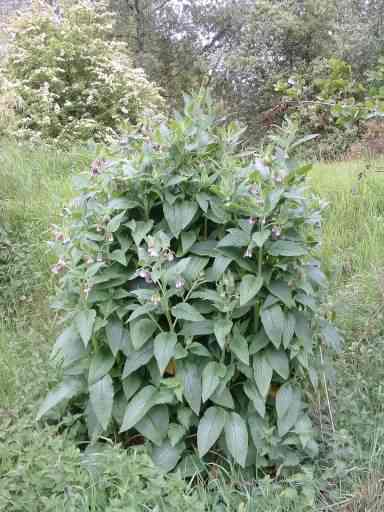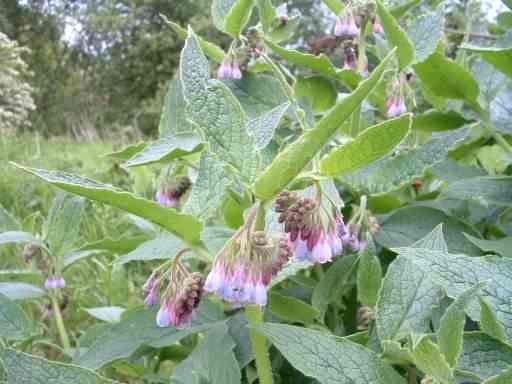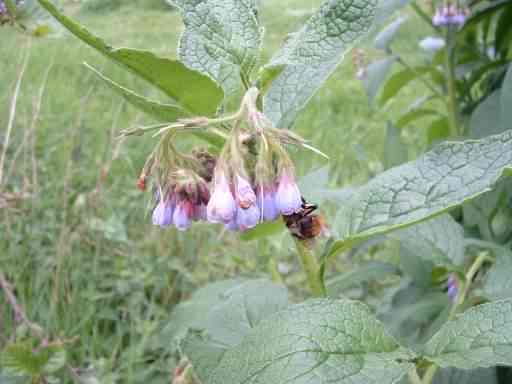


Photos ©2006–
Click any photo for a larger image
Russian Comfrey - Symphytum x uplandicum
Family - Boraginaceae
Russian Comfrey is a perennial fertile hybrid of Common Comfrey S. officinale and Rough Comfrey S. asperum, now widely naturalised and often found in hedgerows, grassland, waste ground and verges. Growing from a deep black coloured rhizome to about 1m (3ft) high with slightly winged stems with oval bristly or hairy leaves, the upper ones forming wings down the stem. If uprooted or removed it will regrow from small pieces left behind. Blue–purple flowers are found as curved clusters from May to August and arranged in cymes, borne in the upper leaf axils. Other plants with similar leaves include Borage, Common Comfrey, Tuberous Comfrey, Foxglove and Green Alkanet. Like other Comfrey species it has been grown as a fodder crop and the tops of the plant can be used as a green manure, added to the compost heap or made into a tea for liquid feeding.
BCP do not advise or recommend that Russian Comfrey Symphytum x uplandicum is eaten or used as an herbal remedy. Consumed in quantity, Russian Comfrey is one of the more toxic of the Comfrey species, more so than Common Comfrey Symphytum officinale. Used in folk medicine as an external treatment for burns and healing wounds, internal consumption as a tea has been linked to liver damage.
 |
 |
 |
Photos ©2006– Click any photo for a larger image | ||
Site design ©1999– Brickfields Country Park - Privacy -